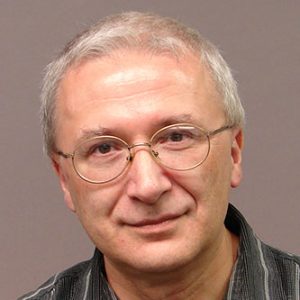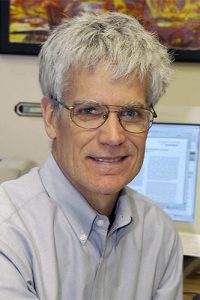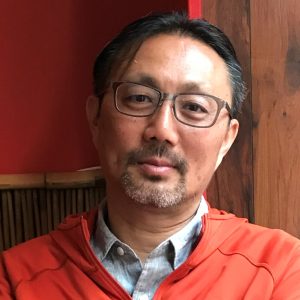Human Health

Sep. 2, 2019
Valeri Mossine
Educational background Ph.D. Bioinorganic Chemistry, Academy of Science of Ukraine M.S. Analytic Chemistry, Kiev State University B.S. Chemistry and Math, Kiev State University…

Sep. 2, 2019
Michael J. Petris
The micronutrient copper (Cu) is essential for several key enzymatic processes involved in energy generation, protection against reactive oxygen species, formation of blood vessels, immune function, and healthy functioning of the central nervous system. This nutrient is able to exist in two oxidation states Cu1+ and Cu2+, and participate in the generation of reactive oxygen species. A delicate balance of copper homeostasis must be maintained to provide sufficient levels of this nutrient, while preventing toxic build up. Copper and Cancer Recent evidence suggests that copper plays a key role in tumor growth because this metal is essential for blood…

Sep. 2, 2019
Brian Mooney
I am particularly interested in protocol and technology development for proteomics and mass spectrometry. We use mass spectrometry for protein identification, protein/peptide quantitation, and mapping sites of post-translational modifications and protein-protein interactions. Metastable Crystallins: Structure and stabilization (NEI-NIH award R01EY023219) Cataract and a host of other diseases result from abnormal interaction of proteins in the cells. The goals of this research are to understand lens protein aggregation in cataract formation and to develop and test lens protein alpha-crystallin-derived peptide as active mini-chaperones capable of suppressing protein aggregation. Understanding the structural changes in mutant proteins associated with cataract can help…

April 4, 2019
Kiruba Krishnaswamy
Krishnaswamy is an Associate Professor of Sustainable Food Systems Engineering at the University of Missouri, Columbia. She has a joint appointment in the Department of Chemical and Biomedical Engineering and the Division of Food, Nutrition, and Exercise Sciences. Her research program Food Engineering and Sustainable Technologies integrates convergence sciences with engineering principles to address the interconnected challenges of food and nutrition security. She uses a circular food systems approach to support the UN Sustainable Development Goals (SDGs). Krishnaswamy obtained her B.Tech. in Food Process Engineering from Tamil Nadu Agricultural University, India. She obtained the Canadian Commonwealth Scholarship for her graduate…

Feb. 20, 2019
Bill Folk
Educational background Ph.D. Biochemistry, Stanford University Courses taught School of Medicine Preclinical Courses Honors College Colloquia Undergraduate Research Courses…

Nov. 6, 2018
Amanda L. Patterson
Educational background Ph.D., Washington State University, 2013 Courses taught ANSCI 8087: Graduate Seminar in Animal Sciences ANSCI 8434: Special Topics in Reproductive Biology…

Dec. 15, 2017
Sonja A. Wilhelm Stanis
Educational background Ph.D., University of Minnesota Courses taught PRST 4250/7250: Parks, Health and Wellness PRST 8430: Social and Behavioral Research Methods PRST 2111: Park Planning and Design PRST 4340/7340: Recreation Land Management…

Nov. 10, 2017
Jared E. Decker
IDENTIFYING LOCI RESPONDING TO SELECTIONIn 2012 Decker published a method, now called Generation-Proxy Selection Mapping, to identify loci responding to current selection. In this analysis, birth date (as a surrogate to generation number) is fit as the dependent variable in a mixed model equation. Variants that have changed in frequency rapidly due to selection are strongly associated with birth date, thus the method identifies regions under selection. The mixed model equations correct for demography, relatedness, and population structure within the data. We have previously used this method in Angus cattle using approximately 45,000 SNPs. In 2021, Decker’s group published…

Nov. 3, 2017
Chung-Ho Lin
Lin is the lead scientist for the bioremediation, natural products and bioanalytical programs at the Center for Agroforestry at University of Missouri. His primary research involves the use of plants, microbes and engineered enzymes for bioremediation, ecological restoration, and development of bioeconomy. His bioremediation research focuses on bioremediation of organic pollutants and human pathogens. Since the COVID19 pandemic in 2020, Dr. Lin has successfully redirected the analytical resources and led his research team joining the task force ‘Coronavirus Sewershed Surveillance Project’ sponsored by the state and federal agencies to provide an early warning and capture the emergence of the…

Aug. 16, 2017
Susanta Behura
Our lab uses multi-omics data including transcriptomics, epigenetics, metabolomics, proteomics, and single-cell genomics to address fundamental questions relating to Animal Genetics, Genomics and Reproductive Biology. Currently, our research aims are to better understand the regulation of fetal brain development in animals. Our future plans are to investigate how early-life stress and abnormalities impact brain health and diseases later in life. The overarching goals of the lab is to expand our understanding of fundamental biological questions and accelerate the transition from basic science to translational research. Educational background Ph.D., Utkal University, India Courses taught An_Sci 8443: Functional Genomics of Mammals…
- « Previous
- 1
- 2
- 3
- 4
- Next »